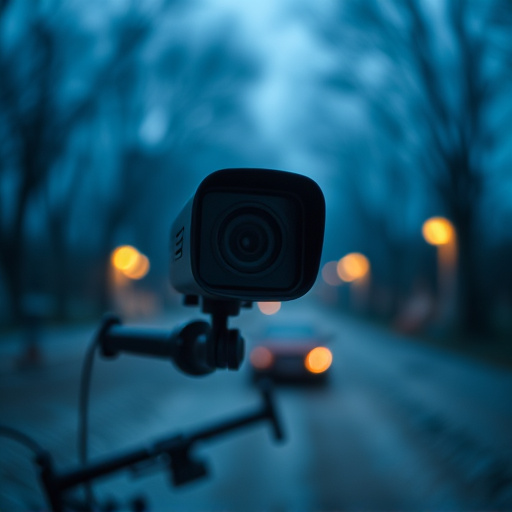Hidden micro cameras, prevalent in today's digital era, raise significant privacy and safety concerns. Used for child protection or malicious purposes, these tiny devices can be easily concealed. Advanced scanning methods like RF analysis and thermal imaging are transforming the fight against them. Legal frameworks globally vary, with some prohibiting secret recordings without consent while others allow them under specific conditions. Balancing privacy protection and intervention, micro cameras can be powerful tools for safeguarding children but require careful regulation to avoid infringing on individual rights.
Hidden recording devices are a growing concern in today’s digital age, particularly for parents seeking micro cameras for child protection. This comprehensive guide explores the prevalence and implications of hidden cameras, delving into advanced signal scanning techniques to detect concealed devices. We also navigate legal considerations and ethical dilemmas surrounding secret recordings, offering valuable insights for those looking to safeguard their children in an increasingly sophisticated surveillance landscape.
- Understanding Hidden Recording Devices and Their Prevalence
- Micro Cameras as Tools for Child Protection: A Parent's Guide
- Advanced Signal Scanning Techniques to Detect Concealed Cameras
- Legal Considerations and Ethical Implications of Secret Recordings
Understanding Hidden Recording Devices and Their Prevalence
Hidden recording devices, often referred to as micro cameras, have become increasingly prevalent in today’s digital age. These tiny yet powerful tools can be concealed almost anywhere, making them a concern for privacy and safety. From safeguarding children with Micro Cameras for Child Protection to preventing fraud and theft, the need to detect these hidden devices is paramount. They are used in various settings, from homes and offices to public spaces, raising important questions about surveillance and personal autonomy.
The prevalence of micro cameras highlights the growing complexity of maintaining privacy and security. As technology advances, so do the capabilities of these devices, making them harder to detect. This has led to a rise in specialized scanning methods and equipment designed to identify hidden recording devices. Understanding these devices and their potential misuse is crucial for implementing effective countermeasures to protect individuals and organizations alike.
Micro Cameras as Tools for Child Protection: A Parent's Guide
Micro cameras, often used for surveillance and security purposes, have found a crucial role in child protection for parents. These tiny yet powerful tools can be life-savers when it comes to ensuring your child’s safety. By discreetly placing micro cameras in strategic locations around the home, such as play areas or bedrooms, parents gain an additional layer of peace of mind.
These cameras allow parents to remotely monitor their children’s activities and interactions, helping them identify potential hazards or inappropriate behavior. With features like night vision and motion detection, they offer a constant watchful eye without intruding on privacy. A parent’s guide to micro cameras for child protection should emphasize the importance of legal considerations, ethical use, and understanding the benefits of this modern tool in raising secure and well-guarded children.
Advanced Signal Scanning Techniques to Detect Concealed Cameras
In the quest to uncover hidden recording devices, especially micro cameras used for child protection, advanced signal scanning techniques have emerged as indispensable tools. These methods go beyond traditional detection by employing sophisticated technology to identify and locate even the most discreetly placed surveillance equipment. One such technique is radio frequency (RF) analysis, which scans for unusual RF signals that may be emitted by hidden cameras. This non-invasive method allows security professionals to check various devices without causing any damage or leaving traces.
Additionally, thermal imaging cameras play a pivotal role in detecting heat signatures of electronic devices. By visualizing temperature variations, these tools can uncover micro cameras cleverly disguised as everyday objects. When combined with digital forensics and signal processing techniques, such advanced scanning methods offer robust solutions to combat the growing concern of hidden surveillance, ensuring a safer environment, particularly for children.
Legal Considerations and Ethical Implications of Secret Recordings
The use of hidden recording devices, often facilitated by micro cameras, raises significant legal and ethical considerations, especially when it comes to child protection. In many jurisdictions, the legality of secret recordings is tightly regulated and depends on specific circumstances. For instance, in some regions, it’s entirely prohibited to record conversations or activities without all parties’ consent, while others permit such actions under certain conditions, like in cases involving domestic violence or fraud.
Ethically, the debate revolves around privacy rights versus crucial interventions. While hidden cameras can serve as powerful tools for exposing abuse or harmful situations, they also infringe upon personal privacy. The presence of these devices could potentially deter individuals from engaging in inappropriate behaviors if they know they’re being recorded. However, it’s essential to balance this power carefully, ensuring that the use of micro cameras is a last resort and conducted within clearly defined legal boundaries to protect both victims and suspects alike.
Hidden recording devices pose a significant concern in today’s digital age, especially regarding child safety. While micro cameras can serve as powerful tools for parental oversight and protection, it is crucial to balance their use with legal and ethical considerations. Advanced signal scanning methods offer a way to detect these hidden threats, ensuring peace of mind for parents while respecting privacy. Staying informed about the latest technologies and legal boundaries enables parents to make educated decisions regarding micro cameras for child protection.
